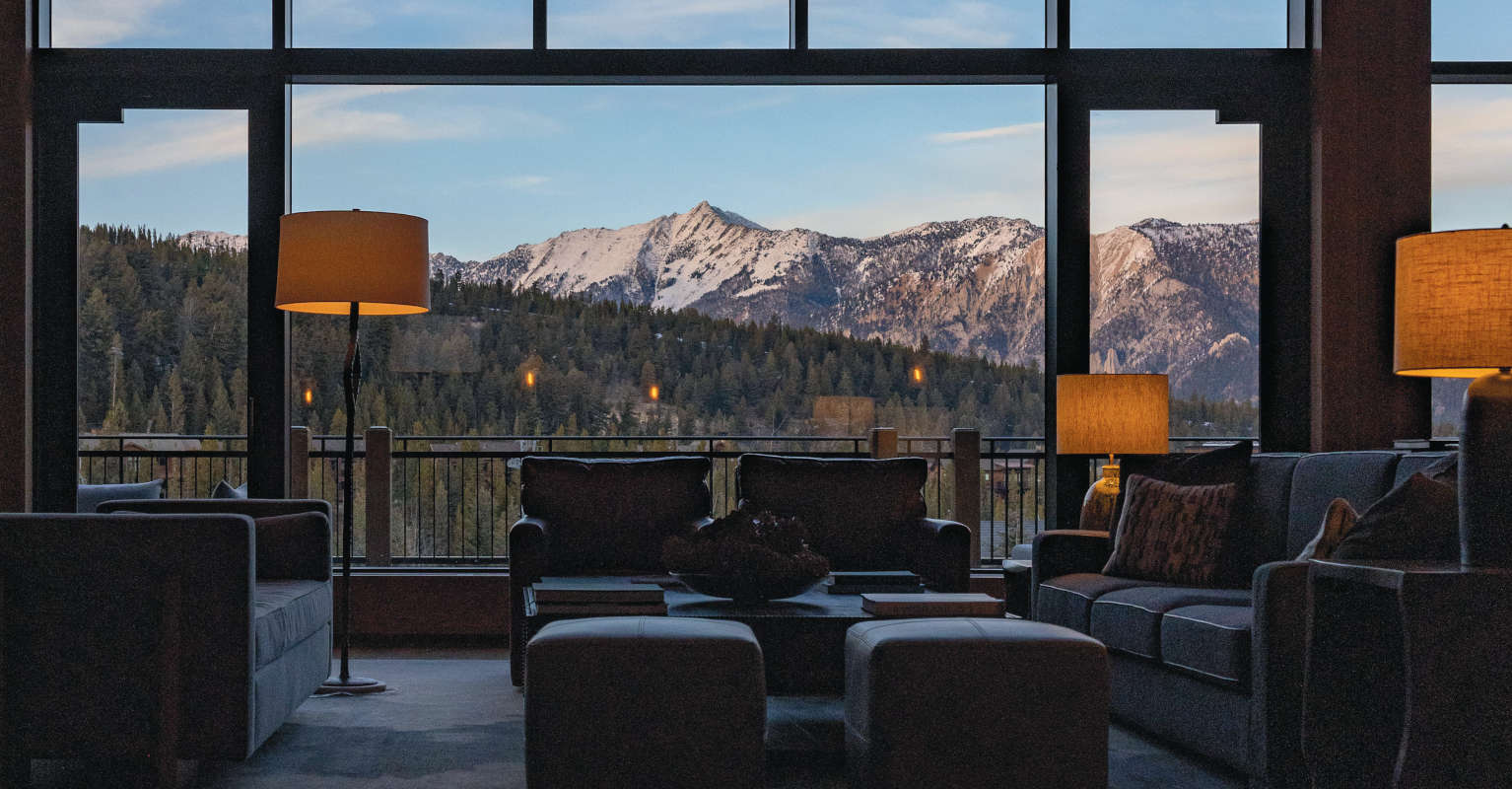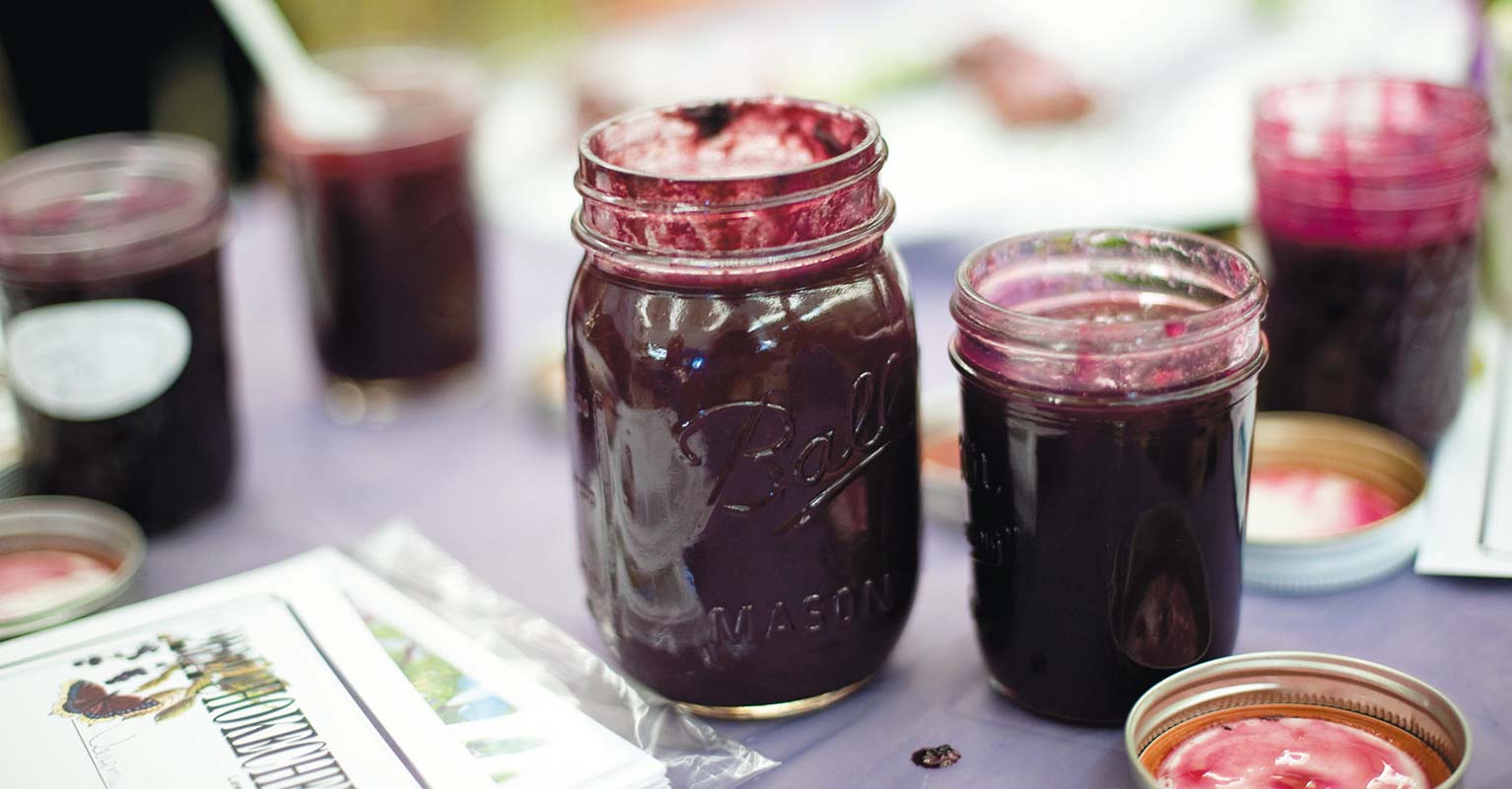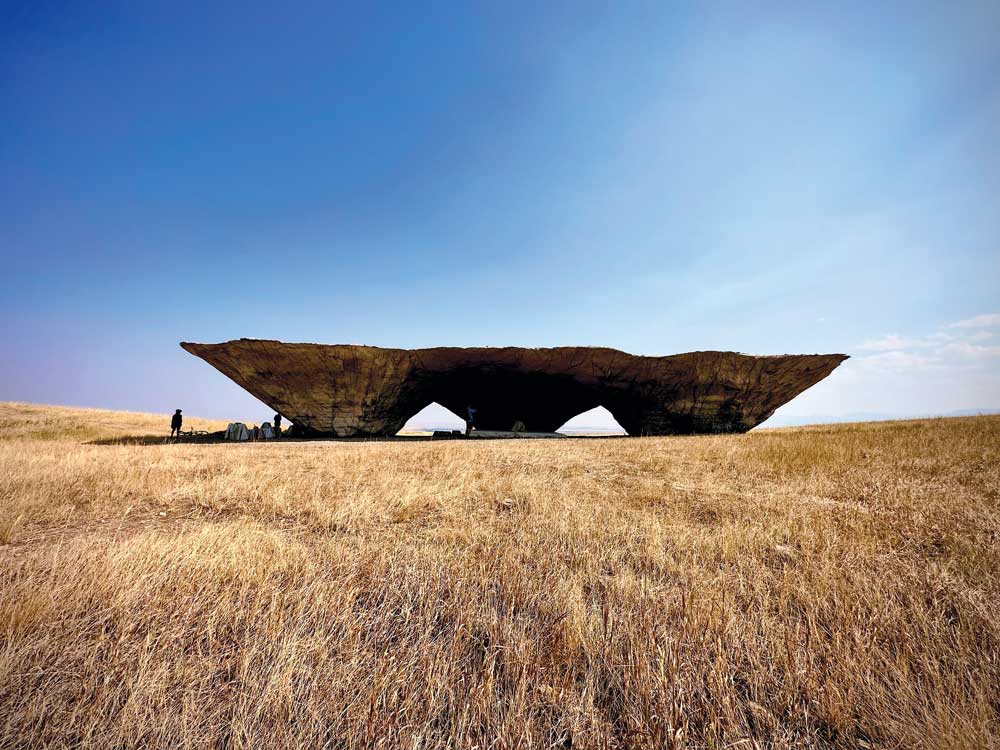A Farm-to-Table Discovery
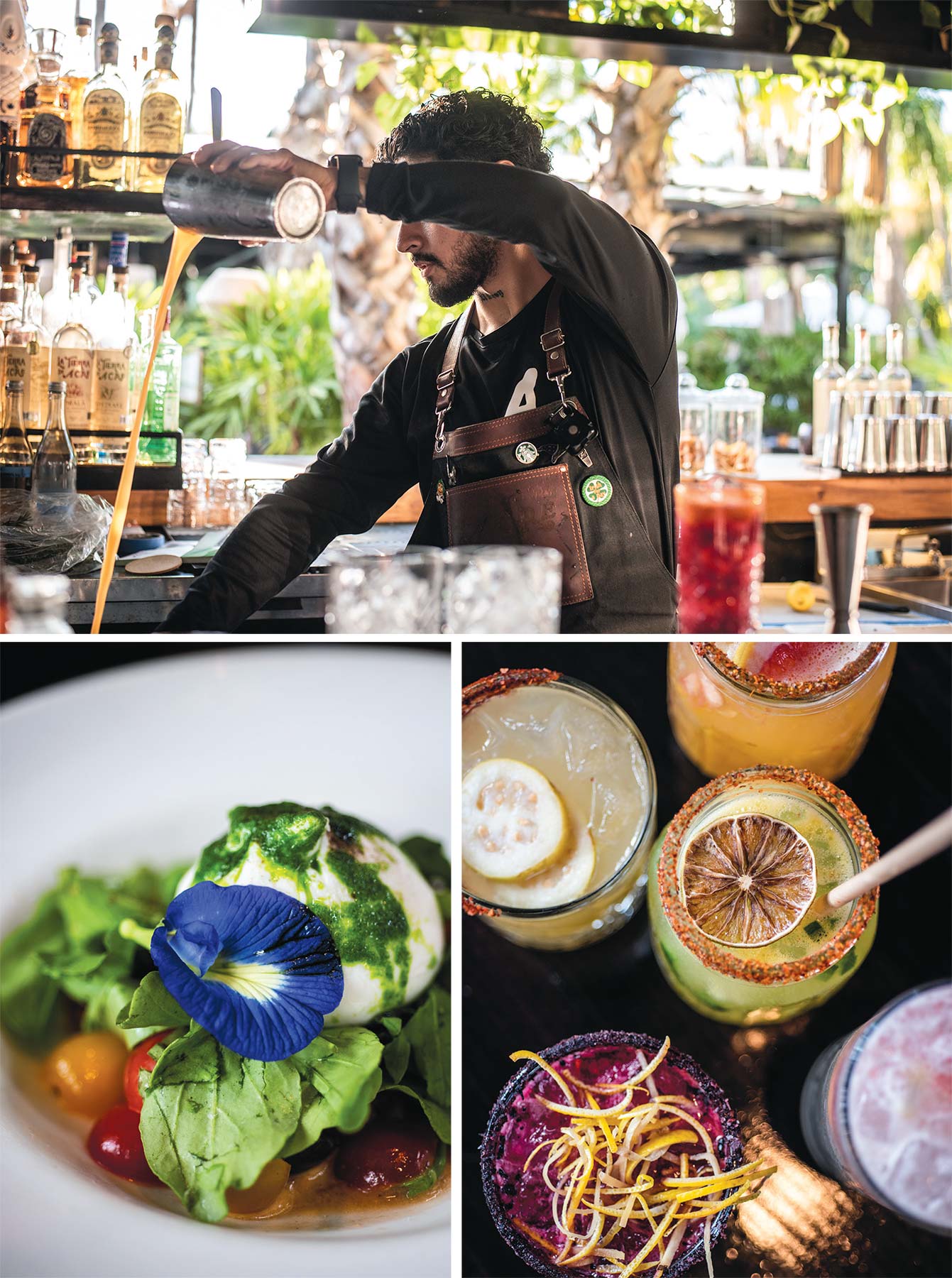
Aside from mountain ranges that stretch high into the sky, Bozeman and Baja California Sur, Mexico, seem like they share very little in common. But dig a little deeper and you’ll find two communities with rich agricultural history. Each has its challenges: Bozeman, a ridiculously short growing season; Baja, a high-mountain arid desert that swings between drought and floods. Yet both communities support a deep connection to farming and ranching and resurging interest in the local food economy.
Approaching the Los Cabos area from high in the air, the views are a mix of the Pacific Ocean and Sea of Cortez coming together at the southern tip of Baja California: Cerulean blue waves crash onto pristine sands; the tall craggy peaks of the Sierra de la Laguna domineer over the arid, mountain mesquite and palo blanco scrub at lower elevations. The area receives less than 20 inches of rain annually. The idea of rich soils and farmland seems absurd from the approach.
East of the booming urban sprawl of San José del Cabo lies the farming and fishing village of Ánimas Bajas. Just over the East Cape Road bridge from Old Town, across the sweeping dry riverbed of the Río San José’s arroyo seco, Ánimas Bajas sits in the hills, relatively untouched by the growth of San José del Cabo, which has grown to nearly 135,000 inhabitants. The roads in Ánimas Bajas are still mostly dirt and heavily potholed. Animals roam free. Ánimas Bajas is, however, a great place to visit during Montana’s cold winter months for its deep sense of community—which feels awfully familiar, and yet foreign at the same time.
The ecosystem of the Río San José, including its wide, dry stretches of arroyo seco, and its seaside estuary—the terminus for all the mountain creeks of the surrounding Sierra de la Laguna— is quite unique. The water table is only 10 feet down. The soils are alluvial: a near-perfect mix of organic materials, sand and, more importantly, clay. It is this young clay that contributes so greatly to the area’s soil fertility due to its electric charge and ion exchange with the other soil elements surrounding it. Working the seemingly barren land to eventually expose these rich properties takes time, patience, effort, diligence, and vision—as seen in the work of many area farms and eateries, in particular Flora Farms, ACRE, and Tamarindos.

Flora Farms
The well-established Flora Farms was started by San Francisco ex-pats Gloria and Patrick Greene, who form the brain trust and unstoppable life force behind the farm and restaurant’s vision, growth, and success through several commercial iterations over nearly 30 years. Today, Flora Farms is a concept-driven farm-to-table restaurant that sources produce from its on-site farm and nearby ranch.
Leopoldo “Polo” Alejandro is Flora Farms’ horticulturist, herbalist, and student of the late great champion of biodiversity and botanist of heirloom seeds Gabriel Howearth. As Alejandro walks through the extensive gardens, he describes the permaculture techniques he uses to amend the soil, experimental seed varieties he plants, and some of the regenerative practices that he has put into place on the 25-acre farm.
Alejandro’s favorite plant seems to be the pole bean, which produces several times a year, is a natural source of nitrogen, and along with the farm’s banana plants provides shade for some of his seedling experiments. The garden is permaculture in action. “Just because you are growing ‘organic’ produce doesn’t mean you’re not mining the soil of all its nutrients,” Alejandro says, describing the importance of soil care.
At the Flora Farms ranch, a 150-acre property near the San José del Cabo airport, in a warmer climate a little farther north and inland away from the cooling influence of winds coming off the sea, are more plant and fruit varieties, as well as animals that produce dairy and the restaurant’s famous chop of Iberian pork. The ranch also includes a whole-animal butchery that services the restaurant.
Finished with our tour of the property’s gardens, we stroll to the restaurant for lunch. The menu overflows with inventive fruit- and herb-inspired house cocktails, salads from the garden, sandwiches, and Neapolitan pizzas made fresh with Flora Farms’ own sourdough. All are made using ingredients straight from the earth. Flora Farms is in fact an operating farm and ranch, with a restaurant, pizzeria, and ice cream stand attached so that guests can deeply enjoy the fruits of Flora Farms’ labor.
Executive Chef Rebecca Weitzman oversees several lines of business at the farm, including events, weddings, the pizzeria, the test kitchen, and of course the main restaurant. She describes her role at Flora Farms quite enthusiastically: “What’s not amazing about a restaurant literally in the middle of a 25-acre organic farm?” she says. “For a chef, it’s a total dream to be here. Everything is made in-house. We have our own ranch, we do whole-animal butchery, homemade charcuterie, and sourdough for handmade bread and pizza. It’s amazing! I feel very lucky every day.”
Flora Farms is located just north off of the East Cape Road and the La Playa area. For more information and reservations (highly encouraged), visit flora-farms.com.


ACRE
After climbing the dusty, washboard dirt roads above San José del Cabo’s East Cape Road, past Flora Farms by one arroyo, we see a handmade sign on the side of the road and begin to slowly, very carefully navigate the rental car around deep potholes toward an oasis of green stretching out in the tight valley below. At the grass thatch kiosk at the end of the dirt parking lot, two young women greet us: “Welcome to ACRE!” (pronounced “AH-cray”).
From the welcome kiosk, we wind our way through the tall mango grove that envelopes the smooth-poured concrete pathway only to exit suddenly at an ultramodern glass and concrete outcropping: the ACRE Restaurant & Cocktail Bar. Chillout lounge music plays soft and low in the background.
Chef Arturo Rivero describes his ambitious plans to increase and enhance the farm in 2024 while focusing efforts and resources producing the best food that they can. “There are already great outside resources for organic products throughout the Los Cabos area, so why waste effort and water growing species in the garden that don’t represent ACRE’s absolute best?” Rivero says, describing his decision to focus on growing plants that the farm can produce extremely well, while sourcing other ingredients from partner farms. Rivero’s cooking focus is clean and simple: Mexican cuisine made from local ingredients where freshness is absolutely key. He sources as much from the ACRE farm as he can, but the menu is not dictated by what the farm grows.
ACRE Resort already has a half dozen villas on site for residents and visitors. The structures are made of rammed earth using the very soils that were removed to build their foundations. ACRE hosts an animal shelter on the property with a variety of animals, from dogs and cats to goats. The shelter acts almost like a petting zoo and is open to non-guests.
In the year to come, Rivero’s team will add a new casual dining experience within the confines of the gardens, plant multiple agave varietals, build a whole-animal butchery on site, and construct ACRE Academy—a suite of open-air buildings designed to host arts and culture events like educational workshops, a business learning center, and health-inspired retreats.
ACRE Resort is located less than 1 kilometer west of Flora Farms in the same area of Ánimas Bajas. For more information and reservations (highly encouraged), visit acreresort.com.
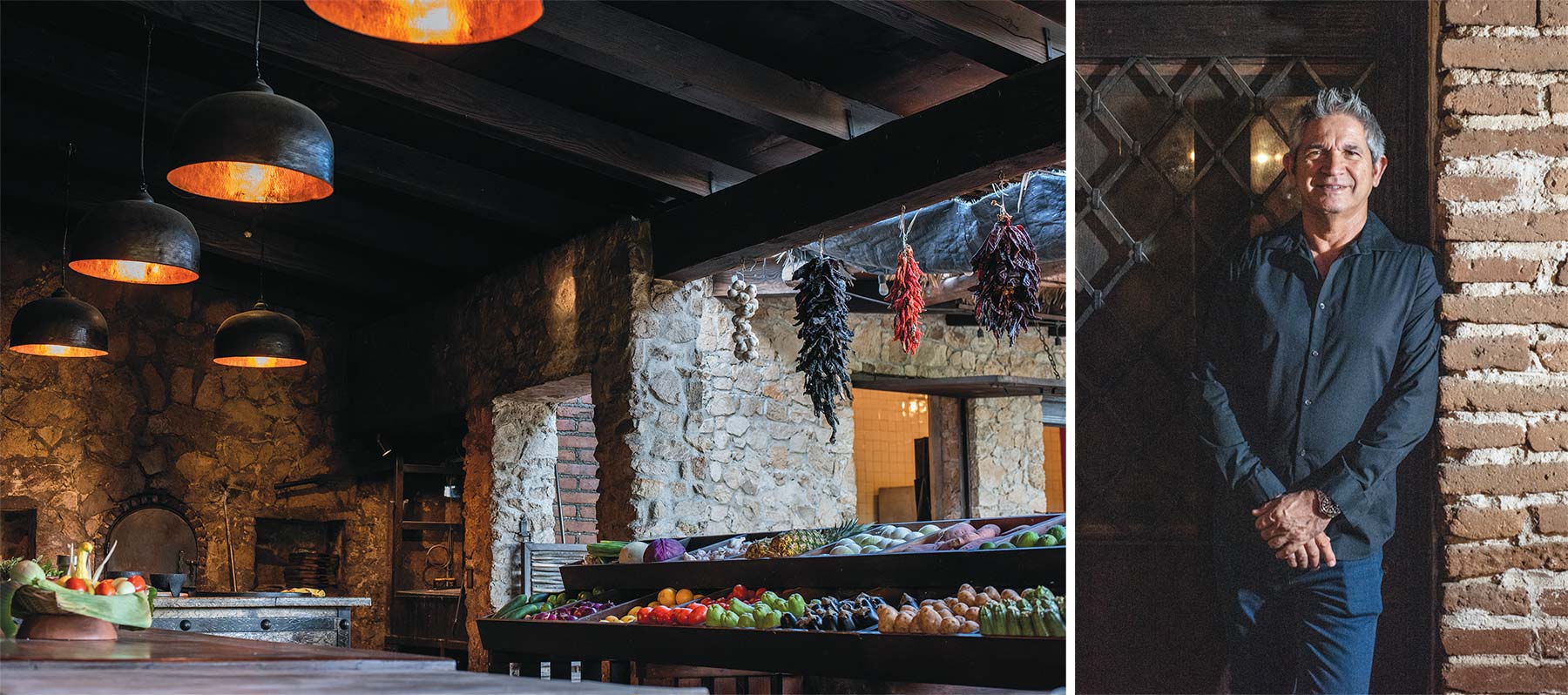
Tamarindos
The breeze comes off the Sea of Cortez onto the San José estuary and hits the valley surrounding Tamarindos before moving deeper into the landscape. The Tamarindos farm and adjoining restaurant enjoy their own microclimate among the valley farms of Ánimas Bajas.
In the late 1880s, the valley around Tamarindos hosted the Castro family home, which still stands today and forms the backbone of the restaurant. Here, agrarians grew sugar until the 1970s when Oregon’s Jacobs Farm began cultivating fresh organic herbs, earning the area a well-deserved reputation and global distribution.
In 2001, Enrique Silva entered the fray. Farmer, chef, entrepreneur, and agricultural engineer, Silva purchased the farm to provide fresh, certified-organic produce to his restaurant, Tequila, in old San José del Cabo. Today, Silva runs the Tamarindos restaurant on the historic site and also offers hands-on cooking classes using the farm’s produce. He recently launched a plan to add wellness villas, a marketplace, thatch-roofed palapas, a spa, a pool, and is doubling efforts on his coffee roastery and mezcal businesses. He plans to bring in goats, cows, ducks, and chickens and launch regenerative farming practices on the property. The driving force of the growing community is wellness, health, education, and holistic living.
The microclimate surrounding Tamarindos allows for primarily dry farming and the production of some 80 species of plants (this includes everything from fresh herbs to 28 varieties of tomatoes, beets of all stripes, carrots, bok choy, kale, guavas, citrus fruits, bananas, passion fruit, and melons). The growing season in Ánimas Bajas is eight to nine months long starting in earnest in November.

This year’s season, however, everyone is two months behind due to Hurricane Norma and an abnormally hot 2023.
Tamarindos is almost completely self-sustained, using the produce of its working farms to fortify cooking classes and of course the kitchen of Silva’s restaurant. In addition to his own farm’s produce, Silva takes great advantage of the plentiful seafood available in this part of Baja for his very simple Mediterranean-influenced Mexican cuisine that also features local pork, chicken, and goat.
“It’s a sea of flavors!” proclaims our friend and dinner guest as she puts her fork back into one of the dishes nestled on our candlelit table.
Beef, however, is not a common menu item because it requires so much water and grass. Beef is far more common in Silva’s home state of Sonora, Mexico. I tell Silva that he should ask his beef supplier for samples from Montana as an alternative to the steaks he gets from Oklahoma. He and I are only half joking during the discussion. I even recommend he consider our local bison. “Maybe,” Silva says with a laugh. “Well, in any case, I’ll be the only one serving it.”
Tamarindos is located just a bit farther west and south of ACRE Resort in the same area of Ánimas Bajas. For more information and reservations (highly encouraged), visit lostamarindos.mx.
TIPS FOR TRAVELERS
A special note about traveling throughout Ánimas Bajas: Online maps tend to give directions that include driving shorter routes using the arroyo seco. The condition of these entirely sand roads changes quickly and drastically. We do not recommend you use them, unless you’ve rented a Baja 500 dune buggy. Instead, consider routes that include East Cape Road and the bridge over the arroyo. The left-hand turn from East Cape Road onto the dirt road up the hill to each of these locations (traveling east and away from San José del Cabo) is 5 kilometers past the El Rey Pescador traffic rotary and statue commemorating local fishermen of La Playa. Ride share apps can also be scheduled in the area for an absolutely stress-free experience.


